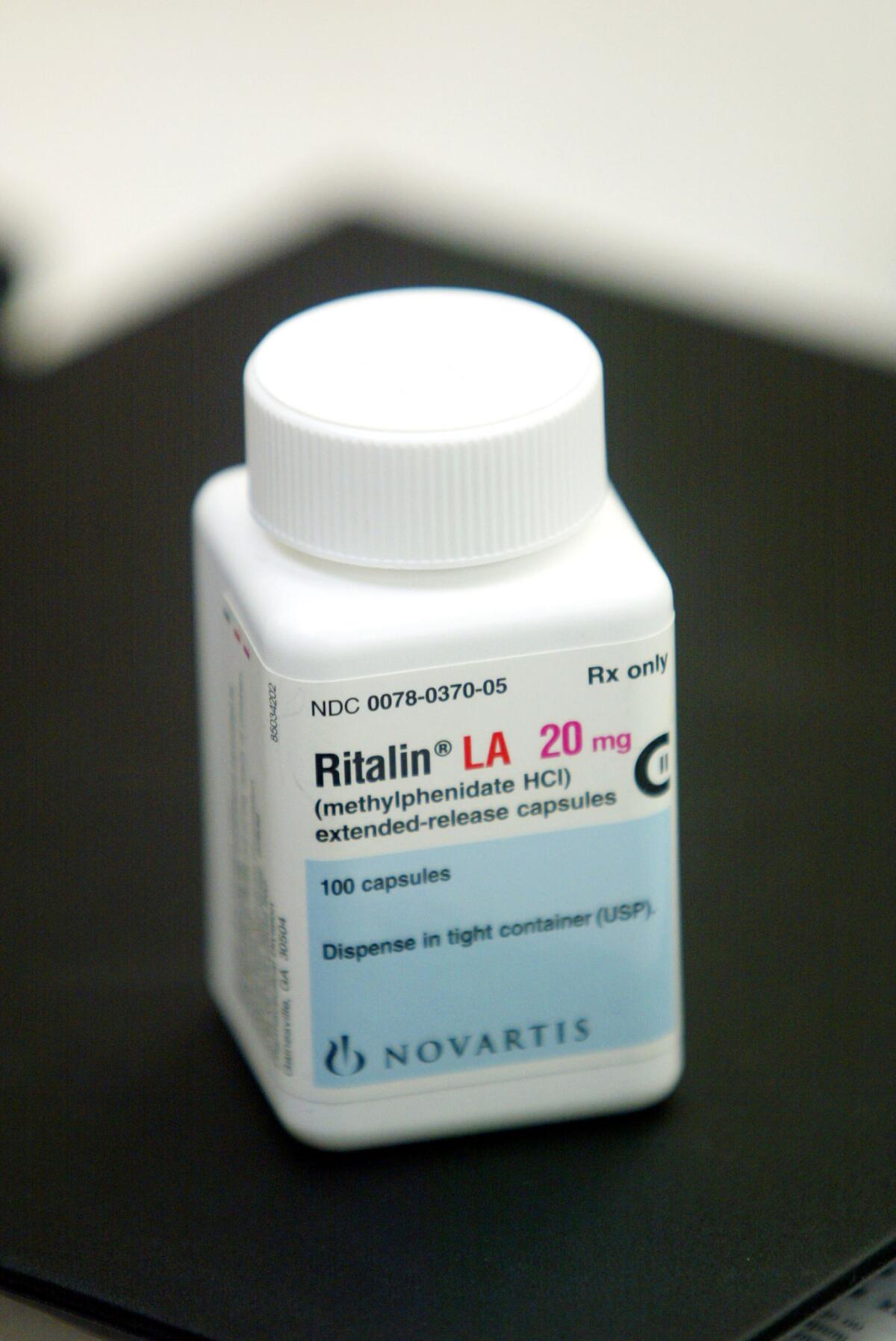Pentagon study links prescription stimulants to military PTSD risk

Defense Department researchers analyzing data from nearly 26,000 service members found that those with prescriptions for stimulants including Ritalin were five times more likely to have PTSD.
Stimulant medications used to treat attention deficit problems and keep service members alert during long stretches of combat might increase vulnerability to post-traumatic stress disorder, a new study suggests.
Defense Department researchers analyzing data from nearly 26,000 service members found that those with prescriptions for the stimulants were five times more likely to have PTSD.
Drugs such as Adderall and Ritalin raise concentrations of the brain chemical norepinephrine, which has been shown to result in more vivid and persistent memories of emotionally charged situations.
NEWSLETTER: Get the day’s top headlines from Times Editor Davan Maharaj >>
Traumatic memories are a hallmark of PTSD.
“When you take a stimulant, you enhance learning,” said Dr. Richard Friedman, a psychiatrist at Weill Cornell Medical College in New York, who was not part of the study. “PTSD is form of learning. Traumatic experiences hijack circuits in the brain.”
In a 2012 column for the New York Times, Friedman wrote that the drugs were compounding the psychological damage of the wars. Studies show that 12% of service members in infantry units during the wars in Afghanistan and Iraq developed PTSD.
For the new study, published this month in the Journal of Traumatic Stress, researchers started with 25,971 active-duty troops who screened negative for PTSD and followed them from 2001 to 2008.
The subjects are part of the Pentagon’s Millennium Cohort Study, which will track the mental health of service members for the next several decades.
Of the 131 service members who were prescribed stimulants over the course of the study, a total of 20 — or 15% — also had PTSD. Controlling for a variety of socioeconomic, demographic and health factors, the researchers found that was five times the rate for everybody else. Overall, there were 1,215 cases of PTSD.
Those who had been prescribed multiple stimulants and the biggest supplies of the drugs were the most likely to have PTSD.
The results did not prove that the drugs caused the disorder. In the majority of cases, the data did not tell researchers whether the prescriptions preceded the onset of PTSD.
Other factors might help explain the results, experts not involved in the study said. For example, the researchers did not control for traumatic brain injuries, which are sometimes treated with stimulants to improve cognitive function.
Dr. Charles Hoge, a psychiatrist at the Walter Reed Army Institute of Research who was not involved in the study, says that more research is needed on the issue but that he does not believe the drugs played much of a role in overall rates of PTSD.
“The vast majority of people with PTSD did not receive stimulants,” he said.
Rachel Yehuda, a PTSD researcher at New York’s Icahn School of Medicine at Mount Sinai who was not part of the new study, said the results raise questions about whether service members with a history of attention disorders should be assigned to the battlefield.
While they are “likely to thrive in the organizing context of structured military training, we need to recognize that they are more vulnerable under the chaotic conditions of combat,” she said.
Twitter: @AlanZarembo
ALSO
Generous GI Bill isn’t keeping today’s veterans out of student loan debt
Pentagon bars University of Phoenix from recruiting on military bases
New tool can identify soldiers most likely to commit violent crimes, study shows






